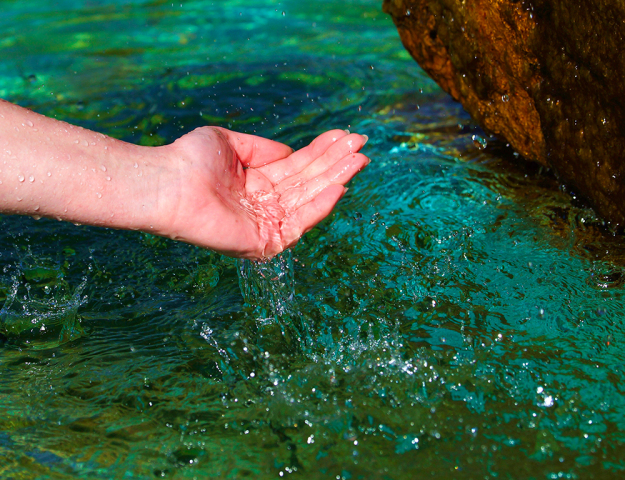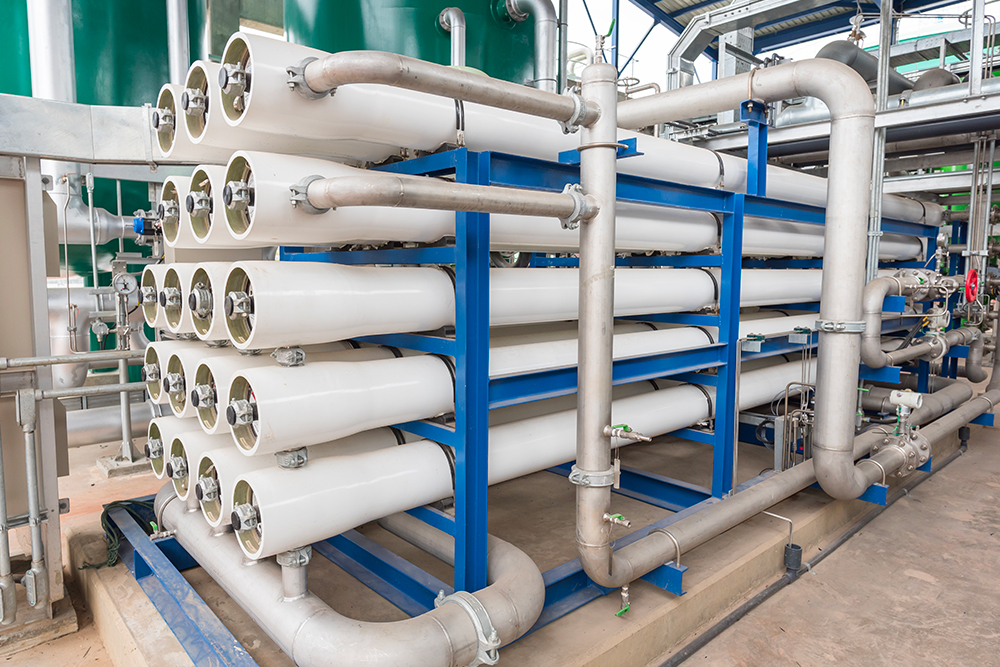
Polymers do their part
The oceans could be an enormous source of water. The only condition for achieving this is developing simple and inexpensive techniques that do not consume much energy. Although various solutions exist, treating water through reverse osmosis is one of the most promising, providing its energy costs can be reduced.
Seawater and polymers in perfect osmosis
Osmosis is a physical process through which two different concentrations of liquids ultimately balance out when separated by a porous membrane. Simply put, if seawater and freshwater are placed in two tubes separated by a membrane, the concentration of salt will become the same in both parts of the container over a period of time. The discovery of this process earned Jacobus Henricus van’t Hoff, a Dutch scientist, the Nobel Prize in Chemistry in 1901. Reverse osmosis involves using high pressure to force the reverse reaction to occur, only letting the water molecules through the membrane.
|
Many reverse osmosis units using this principle are available on the market. Some of them are so powerful that they are used by the horticultural industry, like in Kenya where tulip fields are irrigated with seawater desalinated using the process of reverse osmosis. Generally, traditional reverse osmosis units contain two filters, the first of which is often made of metal (a zinc and copper alloy) and is used to capture very large particles such as sand and limestone sediments. |

An industrial battery of polymer membranes can desalinate several thousands of litres of water per day using reverse osmosis. |
It is also intended to protect the polypropylene or polyamide polymer membrane that is the second filter. Although the system’s effectiveness is proven, it is not particularly efficient. This type of reverse osmosis unit consumes enormous amounts of energy and offers just a satisfactory yield of 50%.
Plastics take their place in the sun
Without developments in the world of polymers and the increased use of solar energy to produce the electricity required to power reverse osmosis units, this technology would likely have been derided for its low yield. In industrial settings, polypropylene and polyamide have been replaced with membranes made from polysulfone, a polymer able to withstand a wide range of temperatures which is also very resistant to chemical attack. This polymer alone has helped to considerably increase yields. Its physical properties offer a higher flow rate and filtering capabilities at least as effective as polyamide models. As a result, polysulfone membranes require three times less energy to filter the same amount of seawater. And when solar power plants are available, like in certain regions in Kenya, irrigating tulip fields is no longer a problem.
Nanotechnology to the rescue
Although reverse osmosis technology has been mastered, research is now being focused almost exclusively on membranes, with the aim of further improving their yields. Two lines of research are being explored, and nanotechnology is the focus in both cases.
Some researchers are working on reducing the size of the membranes’ pores and increasing the number of pores per membrane. While still a start-up, American company NanoH2O was one of the pioneers that first developed a new technology in 2010 when it bombarded a polymer membrane, often made from polysulfone, with zeolite nanoparticles, a porous mineral that swells under the effect of heat and which is particularly hydrophilic. Effectiveness is therefore a function of the size of the pores, which are themselves close to the size of a molecule of water (around one nanometre). It was found that when the membrane’s pores were the same size as water molecules, the molecules would connect to each other in a line, thus accelerating the movement of the water through the sieve. Since then, the small start-up has sold participating interests worth around 12 billion dollars, in particular from major international industrial groups, and it is estimated that over 300 million litres of fresh water are produced every day around the world thanks to these new membranes.
The previous US government has made considerable advancement in this area by funding the lines of research it had deemed the most promising. This enabled Lockheed Martin to develop new graphene membranes which, like those made from polysulfone, had holes measuring one nanometre (one billionth of a metre) in diameter able to let through water while blocking the salt. The only difference was that these filters required pressure two times lower than that traditionally used to desalinate water, thus reducing energy costs by 15 to 20%. Graphene, or rather graphene oxide, is now the ideal material for filtering seawater. The only problem is that the material tends to swell when in contact with water, thus reducing the size of the pores and blocking the water molecules. Scientists resolved this issue by coating each side of the membrane with an epoxy resin in order to prevent the swelling and enable the water to pass through rapidly.

Thanks to zeolite, a porous mineral, the pores of polymer membranes measure barely a few microns and let the water through more rapidly. It is one way to save energy. |
Polymers soak up the rays
Although most researchers are attempting to discover a revolutionary membrane, others are focusing their efforts on the energy needed to power reverse osmosis units. This is the case for a French start-up that was the subject of much interest at the last two COP (Conferences of the Parties). Globally, all desalination plants combined emit 80 million tonnes of CO2 per year, and those emissions increase by 10% each year. Plants in some regions already use soft energy such as solar energy or wind energy, but they require large batteries to store that energy, which is a costly and not necessarily environmentally-friendly solution.
Mascara, the start-up in question, seems to have found the solution by developing a plant that operates autonomously using solar energy, i.e. without batteries. When its 180m2 of polymer photovoltaic cells capture the sun’s rays, the desalination unit operates at full power. At the slightest cloud coverage, the plant slows down or stops. This enables the plant to consume very low amounts of energy, around 2.5Kwh per cubic metre of water produced compared to 7Kwh for a reverse osmosis unit with a thermal engine. To achieve this, its designers had to reinvent the reverse osmosis system which, until then, required stable pressure to desalinate seawater. The solution involved making the flow of water through the polymer membranes proportional to the pressure. That settles the basic principle of the system. However, not much more is known since it is protected by a closely-guarded patent. The first plant of its type was installed in Abu Dhabi in just two weeks. It being so easy to assemble is quite the asset and could help provide fresh water to the 3.9 billion people who will suffer water stress by 2040 according to the OECD, i.e. over half of the world’s population!

A French start-up has developed a solar-powered desalination facility. Promising indeed! A test plant was recently set up in Abu Dhabi. |





